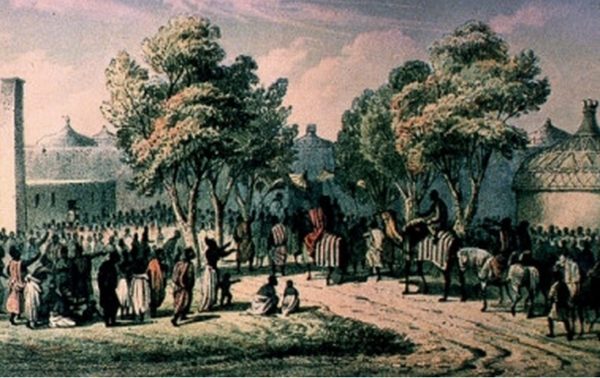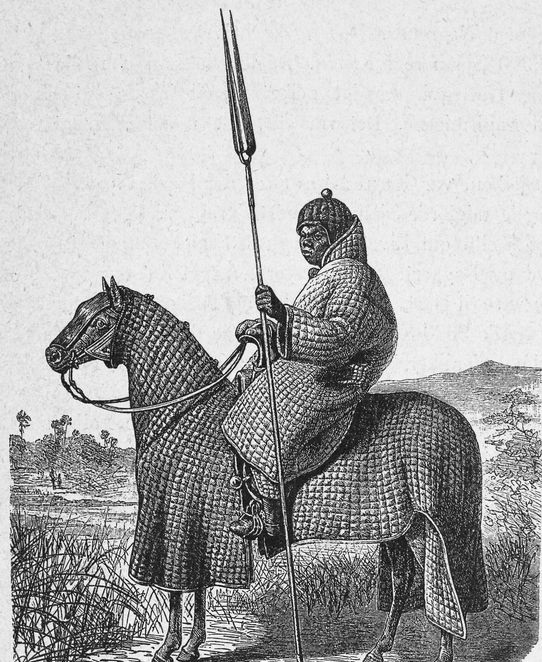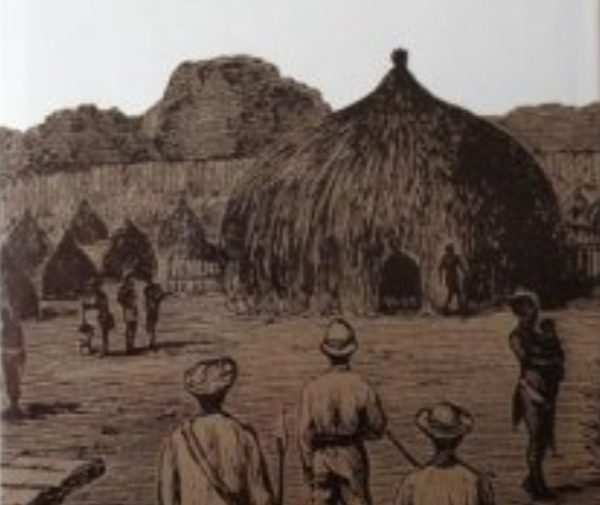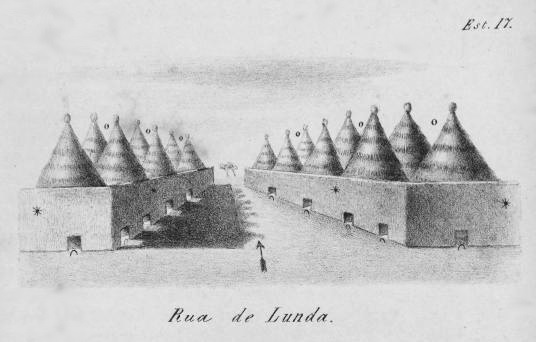Location and description[edit]
The center is located on Plum Island near the northeast coast of Long Island in New York state. During the Spanish-American War, the island was purchased by the government for the construction of Fort Terry, which was later deactivated after World War II and then reactivated in 1952 for the Army Chemical Corps. The center comprises 70 buildings (many of them dilapidated) on 840 acres (3.4 km2).
Plum Island has its own fire department, power plant, water treatment plant and security. Any wild mammal seen on the island is killed to prevent the possible outbreak of hoof and mouth disease. However, as Plum Island was named an important bird area by the New York Audubon Society, it has successfully attracted different birds. Plum Island had placed osprey nests and bluebird boxes throughout the island and will now add kestrel houses.
History
In response to disease outbreaks in Mexico and Canada in 1954, the Army gave the island to the Agriculture Department to establish a research center dedicated to the study of foot-and-mouth disease in cattle.
The island was opened to news media for the first time in 1992. In 1995, the Department of Agriculture was issued a $111,000 fine for storing hazardous chemicals on the island.
Local Long Island activists prevented the center from expanding to include diseases that affect humans in 2000, which would require a Biosafety Level 4 designation; in 2002, Congress again considered the plan.
The Wall Street Journal reported in January 2002 that many scientists and government officials wanted the lab to close, believing that the threat of foot-and-mouth disease was so remote that the center did not merit its $16.5 million annual budget. In 2002, the Plum Island Animal Disease Center was transferred from the United States Department of Agriculture to the United States Department of Homeland Security.
In 2003, a whistle-blower who voiced concerns about safety at the facility was fired by the contractor he worked for. He had discussed his concerns with aides to Senator Hillary Clinton.A National Labor Relations Board judge found that the contractor, North Fork Services, had discriminated against the whistle-blower.
Diseases studied and outbreaks
As a diagnostic facility, PIADC scientists study more than 40 foreign animal diseases and several domestic diseases, including hog cholera and African swine fever. PIADC runs about 30,000 diagnostic tests each year. PIADC operates Biosafety Level 3 Agriculture (BSL-3Ag), BSL-3 and BSL-2 laboratory facilities. The facility's research program includes developing diagnostic tools and biologicals(vaccines) for foot-and-mouth disease and other diseases of livestock.
Plum Island's freezers also contain samples of polio and diseases that can be transferred from animals to humans. In 1991, the center's freezers were threatened following a power outage caused by a hurricane.
Because federal law stipulates that live foot-and-mouth disease virus cannot be studied on the mainland, PIADC is unique in that it is currently the only laboratory in the U.S. equipped with research facilities that permit the study of foot-and-mouth disease.
Foot-and-mouth disease is extremely contagious among cloven-hooved animals, and people who have come in contact with it can carry it to animals. Accidental outbreaks of the virus have caused catastrophic livestock and economic losses in many countries throughout the world. Plum Island has experienced outbreaks of its own, including one in 1978 in which the disease was released to animals outside the center, and two incidents in 2004 in which foot-and-mouth disease was released within the center. Foot-and-mouth disease was eradicated from the U.S. in 1929 (with the exception of the stocks within the Plum Island center) but is currently endemic to many parts of the world.
In response to the two 2004 incidents, New York Senator Hillary Clinton and Congressman Tim Bishop wrote a letter to the Department of Homeland Security regarding their concerns about the center's safety: "We urge you to immediately investigate these alarming breaches at the highest levels, and to keep us apprised of all developments."
Lab 257, a book by Michael C. Carroll, has alleged a connection between Plum Island Animal Disease Center and the outbreaks of three infectious diseases: West Nile virus in 1999, Lyme disease in 1975, and Dutch duck plague in 1967.
Historic buildings
Building 257
Building 257, located at Fort Terry, was completed around 1911. The original purpose of the building was to store weapons, such as mines, and the structure was designated as the Combined Torpedo Storehouse and Cable Tanks building. Fort Terry went through a period of activations and deactivations through World War II until the U.S. Army Chemical Corps took over the facility in 1952 for use in anti-animal biological warfare (BW) research. The conversion of Fort Terry to a BW facility required the remodeling of Building 257 and other structures. As work neared completion on the lab and other facilities in the spring of 1954, the mission of Fort Terry changed. Construction was completed on the facilities on May 26, 1954, but Fort Terry was officially transferred to the USDA on July 1, 1954. At the time, scientists from the Bureau of Animal Industry were already working in Building 257.
Building 101
The structure is a 164,000-square-foot (15,200 m2) T-shaped white building. It is situated on Plum Island's northwest plateau on a 10-acre (40,000 m2) site where it is buttressed by a steep cliff which leads into the ocean. To the east of the building's site is the old Plum Island Lighthouse.
Construction on Plum Island's new laboratory Building 101 began around July 1, 1954, around the same time that the Army's anti-animal bio-warfare (BW) facilities at Fort Terry were transferred to the U.S. Department of Agriculture. Following the transfer the facilities on Plum Island became known as the Plum Island Animal Disease Center. The USDA's $7.7. million Building 101 laboratory facility was dedicated on September 26, 1956. Prior to the building's opening the area around it was sprayed with chemicals to deter insect or animal life from approaching the facility. Upon its opening a variety of tests using pathogens and vectors were conducted on animals in the building. Research on biological weapons at PIADC did not cease until the entire program was canceled in 1969 by Richard Nixon.
A modernization program in 1977 aimed to update both Building 101 and another laboratory, Building 257, but the program was canceled in 1979 because of construction contract irregularities. PIADC facilities were essentially unchanged until a new modernization began in 1990. Two-thirds of the laboratory facilities inside Building 101 were renovated and operations from Building 257 were consolidated into Building 101. Building 257 was closed, and a major expansion, known as Building 100, was completed on Building 101 in 1995.
Replacement facility
A modernization program in 1977 aimed to update both Building 101 and Building 257, but the program was canceled in 1979 because of construction contract irregularities. Plum Island facilities were essentially unchanged until a new modernization began in 1990. Two-thirds of the laboratory facilities inside Building 101 were renovated and operations from Building 257 were consolidated into Building 101. Building 257 was closed, and a major expansion, known as Building 100, was completed on Building 101 in 1995. According to the Department of Homeland Security (DHS), Building 257 currently poses no health hazard.
On September 11, 2005, DHS announced that the Plum Island Animal Disease Research Center will be replaced by a new federal facility. The location of the new high-security animal disease lab, to be called the National Bio and Agro-Defense Facility (NBAF), has been recommended to be built in Manhattan, Kansas. However, this plan has been called into question by a 2009 Government Accountability Office study, which states that claims by DHS that the work on foot and mouth disease performed on Plum Island can be performed "as safely on the mainland" is "not supported" by evidence. In 2012, DHS completed a risk assessment of the Kansas site that called the proposed facility "safe and secure". However, a 2012 review of the risk assessment by the National Research Council called it "seriously flawed".
Activities
PIADC's mission can be grouped into three main categories: diagnosis, research, and education.[citation needed]
Since 1971, PIADC has been educating veterinarians in foreign animal diseases. The center hosts several Foreign Animal Disease Diagnostic schools each year to train federal and state veterinarians and laboratory diagnostic staff, military veterinarians and veterinary school faculty.
At PIADC, the U.S. Department of Homeland Security (DHS) and U.S. Department of Agriculture (USDA) work together; DHS' Targeted Advanced Development unit partners with USDA, academia and industry scientists to deliver vaccines and antivirals to the USDA for licensure and inclusion in the USDA National Veterinary Vaccine Stockpile.[citation needed]
USDA Agricultural Research Service (ARS) performs basic and applied research to better formulate countermeasures against foreign animal diseases, including strategies for prevention, control and recovery. ARS focuses on developing faster-acting vaccines and antivirals to be used during outbreaks to limit or stop transmission. Antivirals prevent infection while vaccine immunity develops. The principal diseases studied are foot-and-mouth disease, classical swine fever, and vesicular stomatitis virus.
USDA Animal and Plant Health Inspection Services (APHIS) operates the Foreign Animal Disease Diagnostic Laboratory, an internationally recognized[citation needed] facility performing diagnostic testing of samples collected from U.S. livestock. APHIS also tests animals and animal products being imported into the U.S. APHIS maintains the North American Foot-and-Mouth Disease Vaccine Bank at PIADC and hosts the Foreign Animal Disease Diagnosticians training program, offering several classes per year to train veterinarians to recognize foreign animal diseases.
Research on biological weapons at PIADC did not cease until the entire program was canceled in 1969 by Richard Nixon.
Bio-weapons research
The original anti-animal BW mission was "to establish and pursue a program of research and development of certain anti-animal (BW) agents". By August 1954 animals occupied holding areas at Plum Island and research was ongoing within Building 257. The USDA facility, known as the Plum Island Animal Disease Center, continued work on biological warfare research until the U.S. program was ended by Richard Nixon in 1969. The bio-weapons research at Building 257 and Fort Terry was shrouded in aura of mystery and secrecy. The existence of biological warfare experiments on Plum Island during the Cold War era was denied for decades by the U.S. government. In 1993 Newsday unearthed documents proving otherwise and in 1994, Russian scientists inspected the Plum Island research facility to verify that these experiments had indeed ended.
In popular culture
Plum Island and PIADC are the subject of a murder-mystery novel, Plum Island, by Nelson DeMille. DeMille has said, "How could anthrax not be studied there? Every animal has it." While addressing popular culture fears of a germ warfare lab at Plum Island, overall, the facility is presented as doing the job described by the Federal Government - research into animal diseases that would either decimate our national livestock or jump to humans and decimate us. The novel portrays the investigation into the murder of two Plum Island scientists. The motive, initially thought to be germs for terrorists or germs for a biotech company, is really the search for the lost treasure of Captain Kidd, who sailed the waters around Long Island prior to his capture. Kidd's treasure has never been found.
Plum Island is also referenced in the 1991 psychological thriller Silence of the Lambs, when the character of Hannibal Lecter is offered a transfer to a different psychiatric institution, as well as the promise of annual week long supervised furlough to Plum Island, in exchange for his assistance in helping the FBI locate the whereabouts of the missing daughter of a prominent US Senator. It is later revealed in the film that the offer is bogus in the first place, used only as a ruse to elicit Lecter's cooperation.
The testing facility at Plum Island is the subject of a novel, The Poison Plum, by author Les Roberts.
Controversy
Unbalanced scales.svg
This article lends undue weight to certain ideas, incidents, or controversies. Please help to create a more balanced presentation. Discuss and resolve this issue before removing this message. (January 2011)
The number of building "257" is a metonym for the entire site in 2004 when Michael Carroll, an attorney, published Lab 257: The Disturbing Story of the Government's Secret Plum Island Germ Laboratory. Many of the assertions and accusations made in the book are counter to the government's position and have been criticized and challenged. The review in Army Chemical Review concluded "Lab 257 would be cautiously valuable to someone writing a history of Plum Island, but is otherwise an example of fringe literature with a portrayal of almost every form of novelist style. " The book advances the idea that Lyme disease originated at Plum Island and conjectures several means by which animal diseases could have left the island. David Weld, the executive director of the American Lyme Disease Foundation, generically opined that "I personally just don't think that has any merit" yet refused to be specific or comment on the number of birds that come into contact with the island and fly back and forth between the mainland, possibly carrying infected ticks.
On July 12, 2008, a creature dubbed the Montauk Monster washed ashore at Ditch Plains Beach near the business district of Montauk, New York. The creature, a quadruped of indeterminate size, was dead when discovered, and was assumed by some to have come from Plum Island due to the currents and proximity to the mainland. Palaeozoologist Darren Naish studied the photograph and concluded from visible dentition and the front paws that the creature may have been a raccoon. This was also the opinion of Larry Penny, the East Hampton Natural Resources Director, though others claim that this is unlikely and interpret the fleshless part of the upper jaw, visible in the photo with empty tooth sockets, as a beak, implying that the creature was a kind of hybrid monster, an extremely implausible and unlikely circumstance.
When Pakistani neuroscientist Aafia Siddiqui, a suspected al-Qaeda member, was arrested in Afghanistan in July 2008, she had in her handbag handwritten notes referring to a "mass casualty attack" that listed various U.S. locations, including the Plum Island Animal Disease Center. In February 2010, she was convicted of assault with a deadly weapon and attempting to kill U.S. soldiers and FBI agents who were seeking to interrogate her.
References[edit]
* "Bioterrorism Fears Revive Waning Interest In Agricultural Disease Lab on Plum Island". The Wall Street Journal. 2002-01-08. Retrieved 2008-05-17.
*Miller, Judith (1999-09-22). "Long Island Lab May Do Studies Of Bioterrorism". The New York Times. Retrieved 2008-05-18.
* "About Plum Island Animal Disease Center". Department of Homeland Security. 2008-12-28. Retrieved 2008-08-04.
* Rather, John (2004-08-22). "Plum Island Reports Disease Outbreak". The New York Times. Retrieved 2008-05-17.
* U.S. General Accounting Office. HIGH-CONTAINMENT BIOSAFETY LABORATORIES: DHS Lacks Evidence to Conclude That Foot-and-Mouth Disease Research Can Be Done Safely on the U.S. Mainland. GAO-08-821T. 22 May 2008. Page 1.
* Healy, Patrick (February 22, 2004). "Plum I. Was Ready For Its Close-Up". The New York Times. Retrieved May 22, 2010.
* "1669-2003: A Partial History of Plum Island", United States Animal Health Association Newsletter, Vol. 30, No. 4, October 2003, pp. 5, 26, accessed January 10, 2009.
* Cella, Alexandra. "An Overview of Plum Island: History, Research and Effects on Long Island", Long Island Historical Journal, Fall 2003/Spring 2004, Vol. 16, Nos. 1 and 2, pp. 176-181 (194-199 in PDF), accessed January 10, 2009.
* Carroll, Michael C. Lab 257: The Disturbing Story of the Government's Secret Plum Island Germ Laboratory, (Google Books), HarperCollins, 2004, pp. 45-48 and p. 60, (ISBN 0060011416).
* Dunn, Adam. "The mysterious lab off New York's shore", CNN.com, April 2, 2004, accessed January 10, 2009.
* "DHS: DHS Issues Record of Decision on Proposed National Bio- and Agro-Defense Facility". Dhs.gov. Retrieved 2011-08-10.
* "Study spurs request to not phase out Plum Island". Newsday.com. 2009-07-31. Retrieved 2011-08-10.
Jump up ^ DHS Issues Updated Site-Specific Risk Assessment For Proposed National Bio And Agro-Defense Facility (NBAF)
* Officials press feds for NBAF
* Wheelis, Mark, et al. Deadly Cultures: Biological Weapons Since 1945, (Google Books), Harvard University Press, 2006 p. 225-228, (ISBN 0674016998).
* Lambert, Bruce. "Closely Guarded Secrets: Some Islands You Can't Get to Visit", The New York Times, May 17, 1998, accessed January 10, 2009.
* "The Poison Plum". Les Roberts. Retrieved 2008-05-17.
* Bleyer, Bill. "Plum Island Animal Disease Center", from Newsday, via The Baltimore Sun, April 26, 2004, accessed January 10, 2009.
* Kirby, Reid. "Book Reviews", Army Chemical Review, January–June 2005, accessed January 10, 2009.
* "What was the Montauk monster? : Tetrapod Zoology". Scienceblogs.com. 2008-08-04. Retrieved 2009-07-14.
* "The Hound of Bonacville - The Independent - July 23, 2008". Indyeastend.com. 2008-07-23. Retrieved 2009-06-08.
* "Indictment in U.S. v. Siddiqui". September 3, 2008. Retrieved February 11, 2010.
* Sealed Complaint in U.S. v. Siddiqui. July 31, 2008. Retrieved February 11, 2010.
* America's Most Wanted 'The Most Dangerous Woman in the World', Der Spiegel, November 27, 2008
* Mayer, Alex, “She is the most significant capture in five years”, St. Louis Post-Dispatch, August 13, 2008, accessed February 11, 2010[dead link]
* "Officials: Female Terror Suspect's Capture Yields Documents, Computer Files", ABC, August 13, 2008, accessed February 12, 2010






















